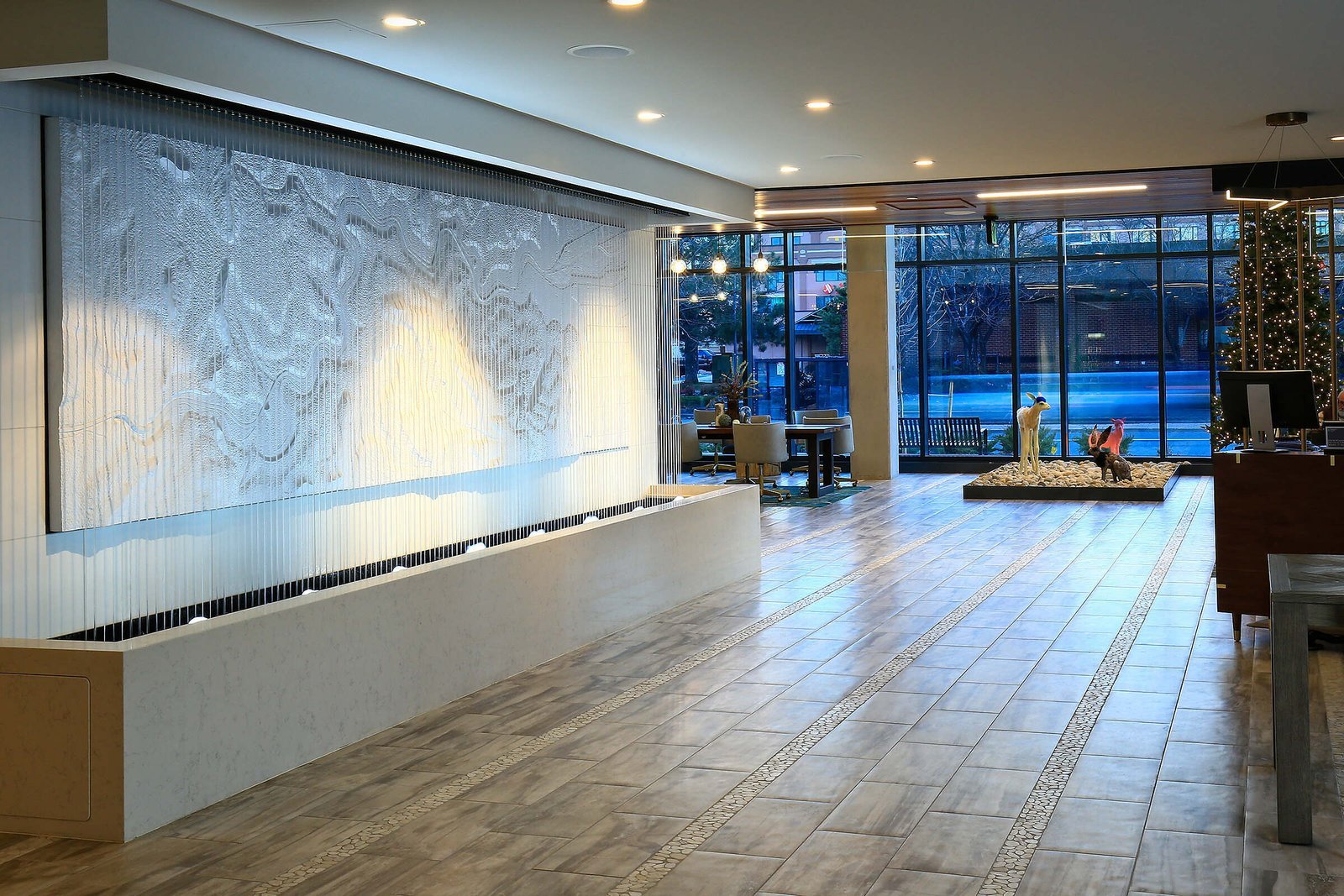Table Of Contents:
- Benefits of Adding a Rain Wall to Your Garden
- Key Takeaways
- Beautify Your Garden With a Stunning Rain Wall Feature
- Conserve Water by Harvesting Rain Through Rain Walls
- Improve Air Quality With Water Features Like Rain Walls
- Attract Local Wildlife by Adding a Rain Wall to Your Garden
- Reduce Noise Pollution Using Rain Walls in Your Garden
- Increase Property Value by Adding a Unique Rain Wall
- Conclusion
Benefits of Adding a Rain Wall to Your Garden
Are you seeking to transform your garden while also addressing sustainability concerns? Incorporating a rain wall could offer an innovative solution. Throughout this article, I’ll guide you through how such water features not only enhance the beauty of your outdoor space but also contribute to water conservation and local wildlife support. Discover the ways in which a rain wall can harness energy, retain moisture, and create a gentle spray that purifies the air, inviting nature’s symphony right to your doorstep. This piece presents a blend of aesthetic appeal and pragmatic benefits, from the tranquility of cascading water that drowns out noise pollution to potentially increasing your property’s market value. By providing solutions to common challenges like water usage and garden ambiance, the content here is geared towards helping you make well-informed decisions for your garden venture, from the ground up to the ceiling.
Key Takeaways
- Rain walls in gardens enhance ambiance and contribute to local ecosystems
- Strategic placement and material choice are essential for rain wall design and functionality
- Rain walls act as natural sound barriers, creating tranquil outdoor spaces
- Incorporating a rain wall can attract wildlife and support sustainable gardening practices
- Unique rain walls boost property value by appealing to eco-conscious buyers
Beautify Your Garden With a Stunning Rain Wall Feature

As someone passionate about garden design, I’m always exploring unique features that elevate outdoor spaces. Installing a rain wall can transform any garden into an enchanting retreat, creating a soothing visual focal point that captures the eye and the imagination. Ensuring the design elements harmonize with your existing garden style is key, whether that involves matching with your siding‘s texture, integrating concrete structures, or selecting the right size, down to the inch. Let’s examine how a rain wall can elevate your garden’s ambiance and aesthetics, bringing tranquil beauty to your outdoor sanctuary.
Install a Rain Wall to Create a Soothing Visual Focal Point
Anchoring a rain wall within your garden not only instills a sense of serenity but also offers practical advantages. Crafted to seamlessly blend with the outdoor environs, the incorporation of materials such as cooperative brick or nature-inspired paint hues ensures the feature complements your space. Conscious selection of these elements, in alignment with your garden’s aesthetic, can elevate the overall garden design while improving the atmosphere.
Proper installation of rain walls ensures the desired gentle cascade without compromising your garden’s foundation or floor integrity. Expertise in water flow management and adequate drainage systems guarantees that the splash of water benefits rather than hinders the surrounding flora. This creates a harmonious balance between the soft murmur of falling water and the natural environment, enhancing both visual pleasure and airflow throughout the garden.
Consider the transformative impact of a rain wall: the soothing sight and sound as water descends, the subtle improvement of humidity levels aiding plant growth, and the creation of a microclimate that enriches your garden’s air quality. With my experience, I advise contemplating the location of your rain wall to maximize these benefits:
- A shaded position to contrast the water‘s shimmer against the dim light
- A place near seating areas for guests to enjoy the calming effects
- An optimal distance from trees and bushes to maintain a clear, impressive water feature
Choose Design Elements That Complement Your Garden's Style
Choosing the right materials for your garden’s rain wall takes thought and a keen eye for design. For instance, incorporating tiles with capillary action can ensure that the liquid flow is consistent and visually appealing. Moreover, selecting a color scheme that harmonizes with the natural palette of your garden is essential. It’s the subtle touches, like the reflective sheen of a well-chosen tile, that can make a rain wall remarkably picturesque.
Durability is also a concern with outdoor installations, as materials must withstand the elements. That’s where plastics come into play – a material I’ve found to be surprisingly versatile and weather-resistant for rain walls. In my projects, using high-quality plastic components ensures the rain wall remains both functional and attractive year-round, without the need for excessive maintenance or costly repairs.
And when you’re making these decisions, remember the storyline your garden weaves through its design elements. Consider how each of these comes into play:
- The gentle trickle of water resonating with the fluidity of your garden’s layout
- The reflection and refraction of light on the water and materials used
- The incorporation of natural elements that convey a sense of earthy authenticity
Carefully chosen elements ensure your rain wall is not just a feature, but a core aspect that reflects and enhances your garden’s narrative.
Your garden now flourishes with the beauty of a rain wall, drawing eyes like morning dew to petals. Let’s harness this allure, turning rainfall into a resource as vital as it is aesthetic.
Conserve Water by Harvesting Rain Through Rain Walls

Integrating a rain wall in your garden not only enhances its beauty but also sets the stage for sustainable gardening through efficient rainwater collection. With my expertise, I’ve designed these systems to incorporate materials like masonry veneer and foam, which, along with strategic use of wood and adhesives, stand up to various weather conditions including snow. Directly utilizing natural rainfall in your garden not only helps reduce water bills but also fosters a more sustainable ecosystem. The upcoming sections delve deeper into these advantages.
Collect Rainwater Efficiently for Sustainable Gardening
In my professional experience, the integration of a rain wall into your garden isn’t solely an aesthetic choice; it serves as an innovative method to collect rainwater. This system acts like a curtain against the sky, capturing water from cloud bursts that can otherwise go to waste. The collected water mimics a natural waterfall, efficiently directed into storage for later use, effectively lowering reliance on municipal supplies and benefiting your garden’s ecosystem.
I’ve observed that incorporating rain walls with efficient harvesting capabilities not only enhances a garden’s sustainability but can also reduce monthly water expenses. By mimicking the waterfall effect, the rain wall gathers water which can be repurposed with ease—perfect for irrigating your bathroom plants or refilling a decorative tabletop fountain. The practicality of these features transcends their visual appeal, adding tangible value to your home’s water conservation efforts.
My designs often include utilizing materials like absorbent paper in the collection system, which aids in capturing moisture and funneling it into storage units. This method not only ensures water is on hand during drier periods but also reaffirms your commitment to environmental responsibility. By harvesting rainwater effectively with a rain wall, you take an essential step in adopting more sustainable gardening practices, making a tangible difference in the conservation of our planet’s most precious resource.
Reduce Water Bills by Utilizing Natural Rainfall
Implementing a rain wall in your garden has proven to be an innovative strategy I’ve used to lower water bills by capitalizing on natural rainfall. Through the prudent construction of such features, homeowners like you can redirect rainwater from the roof or overhang directly to the rain wall, reducing dependence on external water sources. This directly translates to significant savings on utilities, particularly during the rainy season when water needs for gardens can peak.
Moreover, rain walls designed with corrosion-resistant materials like glass can serve a dual purpose—not only as a sustainable water collection system but also as an aesthetic complement to outdoor furniture or a prominent garden fireplace. This results in a tastefully crafted garden that benefits from cost-effective water usage. Let me outline the economic and environmental benefits of this approach:
| Feature | Benefit | Savings |
|---|---|---|
| Rain Wall Construction | Redirects Rainfall | Lower Water Bills |
| Glass & Corrosion-Resistant Materials | Longevity & Aesthetics | Reduced Maintenance Costs |
| Integration with Garden Elements | Enhanced Garden Health | Minimized Watering Needs |
As a creator of customized garden architectures, I’ve incorporated rain walls adjacent to outdoor furniture settings, creating a serene ambience that homeowners treasure. The soft, continuous flow of water through the rain wall not only contributes to an inviting outdoor experience but also conservatively utilizes every drop of rain, which is particularly helpful for maintaining water levels in features like reflection pools and preventing the excessive use of tap water for garden purposes.
Rain walls do more than nourish our gardens; they embrace the skies’ gift. Let’s see how they also purify the air we breathe.
Improve Air Quality With Water Features Like Rain Walls

Instilling a rain wall in your garden does more than just please the eye; it uplifts the environment’s health. Introducing a rainscreen not only propels humidity to boost plant vigor, but also serves as a natural filter against dust and pollutants. This segment delves into how the strategic dimensioning of such water features can augment air quality. We will explore how the steady breeze against a rain wall interplays with elements like stucco finishings, directing the wind to create a cleaner, more wholesome garden atmosphere.
Boost Plant Health by Increasing Humidity With a Rain Wall
Incorporating a rain wall in your garden significantly improves humidity levels, essential for plant health. The presence of a screen that dispenses water uniformly can create a microclimate that enables plants to thrive, particularly in drier climates. As someone deeply involved in garden design, I’ve seen first-hand how steel structures combined with polyvinyl chloride tightly weave together, enhancing the water vapor distribution, and consequently, the vitality of foliage and flowers.
Aesthetically, the blend of a functional water feature with artistry, such as a mural-inspired rain wall, offers more than visual appeal; it actively contributes to garden vitality. With thoughtful waterproofing and design, the mural – fashioned from durable materials – not only serves as an impressive backdrop but also acts to regulate the garden’s microclimate, fostering lush growth and vibrant, healthy plants.
Lastly, the subtle increase in humidity from a well-installed rain wall can aid in the purification of garden air. This occurs as water particles bind with dust and pollutants, leading to a natural cleansing effect. For me, ensuring the correct placement and composition of materials like waterproofing polyvinyl chloride in the rain wall system is key to enhancing air quality, providing a fresher and more invigorating experience for both plants and people alike.
Filter Dust and Pollutants With a Flowing Water Wall
My addition of a rain wall to your outdoor space offers more than a visual treat; it actively serves as a natural filter. The constant cascade of water captures and binds dust particles and pollutants before they can stick to surfaces or compromise air quality. Particularly for gardens close to busy streets or industrial areas, this water feature acts like a built-in air purifier, enhancing the health and comfort of your outdoor haven.
The strategic placement of a rain wall near a window can extend these purifying benefits inside your home. As the rain wall operates, it generates negative ions that combat airborne toxins, resulting in cleaner indoor air that cycles through the space. This is not just theoretical; I’ve witnessed how water features effectively reduce the presence of harmful particulates, making the air safer and more pleasant for you and your family.
Throughout my projects, I have seen rain walls use the natural cohesion of water, a process where droplets bind with ink-like contaminants, clinging to them until they are harmlessly drawn away through the water circulation system. This sustainable approach to air filtration is effortlessly intertwined with the atmospheric serenity that a flowing water wall brings to any outdoor setting.
Clean air circulates here, a testament to the rain wall‘s grace. Beyond its charm, such a feature beckons life, enticing birds to alight and butterflies to dance amidst the garden’s lure.
Attract Local Wildlife by Adding a Rain Wall to Your Garden

In my journey designing stunning exterior spaces, I’ve discovered that incorporating a rain wall offers an unexpected perk: it attracts and supports local wildlife. The soothing sound of water trickling down the rain wall draws birds and creates a much-needed water source for beneficial insects. Let’s explore how features like controlled evaporation, subtle flashing, and adept ventilation within the wall system contribute to creating a thriving habitat in your garden. Each of these elements not only amplifies garden allure but also plays a vital role in the life cycles of local fauna.
Attract Birds With the Soothing Sound of Trickling Water
In my experience designing custom outdoor features, I’ve observed that the gentle cadence of water emanating from a rainfall wall can create a peaceful environment that is irresistibly attractive to birds. Adjusting the pressure and height of the water flow can fine-tune the auditory experience, mimicking the natural sound of a serene stream, which is music to the avian ear. The result is a lively gathering spot in your garden where birds come to bathe and frolic.
The installation of a well-crafted rain wall plays a pivotal role in inviting feathered visitors, creating an acoustic backdrop that seems to whisper an invitation to the sky’s inhabitants. My bespoke designs often include variable height configurations, ensuring that the waterfall sound remains constant despite fluctuating water levels, which maintains the allure for birds seeking refreshment or a pleasant rest stop.
Finally, I consider the strategic placement of the rain wall — avoiding furring and ensuring an open area for winged wildlife to approach — when installing these features. This thoughtfulness not only enhances the beauty of the wall but also serves as a focal point in your garden, creating a hub of natural activity as birds are drawn to the soothing trickles and safe harbor provided by the cascading rainfall wall.
Support Beneficial Insects by Providing a Water Source
In my work transforming garden landscapes, I’ve noticed the introduction of a rain wall has a fascinating effect: it becomes a nexus for beneficial insects. These creatures form the backbone of a thriving garden ecosystem, contributing to pollination and pest control. Having a water source readily available entices these valuable insects, maintaining the health and balance within your garden.
Installing a rain wall follows a design principle akin to creating an inviting interior space, like the buffalo thunder nightclub, where elements are tailored to draw in guests. In the case of your garden, this means fashioning a feature that beckons life, not unlike a customs area that warmly welcomes travelers. Our tiny garden visitors, from bees to butterflies, find respite and resource in the water your rain wall provides.
Choosing to add a rain wall to your cart of garden upgrades is more than a functional decision; it’s a pledge to support local wildlife. As an architect of garden spaces, I equip these walls with subtle, shallow pools which insects can safely access without risk of drowning, akin to strategically placed sipping stations. The result is an increase in the number and variety of beneficial insects, which enhances the vibrancy and ecological function of your garden.
The gentle cascade attracts life, a chorus amidst the green. Beyond their allure, rain walls offer peace, a shield against the clamor of the world.
Reduce Noise Pollution Using Rain Walls in Your Garden

Introducing a rain wall into your garden serves as an effective strategy for diminishing noise pollution. The sound of cascading water offers a soothing alternative to urban clamor, enveloping your outdoor space in tranquility for relaxation. This section uncovers how a well-designed rain wall can mask disruptive sounds, delivering both a tranquil auditory shield and a serene atmosphere conducive to unwinding.
Mask Unwanted Sounds With Calming Water Noise
In my professional role, I’ve seen how adding a rain wall to a garden can effectively mask intrusive noises from the surroundings. The consistent murmur of water falling creates a white noise effect that drowns out the din of traffic, construction, or noisy neighbors, offering reprieve to those seeking solace in their outdoor havens.
During my projects, I’ve carefully chosen and positioned rain walls to act as natural sound barriers. The transformative sound of water not only enhances the tranquility of a space but also provides an acoustic shield, making it a practical solution for urban gardens situated in bustling neighborhoods.
I understand the impact of auditory disturbances on our well-being, which is why I often recommend a rain wall as an elegant and functional feature. Its soothing cascade redirects your focus, drawing attention away from jarring environmental sounds and harmonizing with the natural rhythm of your garden’s ambiance.
Create a Peaceful Outdoor Space for Relaxation
In my role, I’ve designed rain walls that are not just stunning to behold but powerful in creating a haven of peace. The sound of a gentle waterfall within the garden provides a natural melody, enticing relaxation and mindfulness. This serene backdrop, organically woven into the garden’s ambiance, fosters a retreat-like feel, ideal for unwinding after a long day.
Installing a rain wall has repeatedly proven to offer my clients a dual-purpose solution—enhancing garden aesthetics while simultaneously crafting a space conducive to calm and relaxation. The seamless integration of these features into the garden design invites a quiet escape, helping diminish the stress of daily life through the tranquil sounds of cascading water.
My commitment is to create outdoor spaces that not only reflect visual beauty but also promote emotional well-being. Incorporating a rain wall caters to this ethos, infusing the atmosphere with a sense of tranquility that underpins a relaxing outdoor setting, serving as a testament to my dedication to crafting spaces that uplift and rejuvenate the spirit.
Peace descends on your garden, a sanctuary from the city’s clamor thanks to the soothing hum of the rain wall. Yet, this tranquil feature offers another boon: it elevates your estate’s worth with its distinctive charm.
Increase Property Value by Adding a Unique Rain Wall

Adding a unique rain wall to your garden not only enhances its beauty but also ramps up property value significantly. By introducing eye-catching water features that boost curb appeal, these additions satisfy aesthetic desires while appealing to eco-conscious buyers with their sustainable attributes. In the forthcoming sections, I’ll share insights on how a well-placed rain wall can captivate potential buyers and underscore a commitment to environmental stewardship—a strong selling point in today’s market.
Boost Curb Appeal With an Eye-Catching Water Feature
In my career designing bespoke garden elements, I’ve witnessed firsthand how a unique rain wall can significantly elevate a property’s appearance. As an eye-catching water feature, it serves as an alluring point of interest that enhances curb appeal, making a lasting impression on visitors and potential homebuyers alike. The sound of cascading water blended with strategic lighting can turn an ordinary garden into an extraordinary showcase, increasing the desirability and perceived value of the property.
My experience has taught me that the visual dynamics of a rain wall, especially when paired with the garden’s overall aesthetic, are critical in attracting attention. This isn’t just about adding another element to your garden; it’s about creating a focal point that stands out in the neighborhood. A well-crafted rain wall blends artistry with nature, and by doing so, it transforms the garden into a testament to design sophistication, which is highly valued in the real estate market.
Moreover, I’ve advised many clients on the addition of rain walls and watched their investment pay dividends when the time came to sell. Integrating such a feature showcases a commitment to luxury and sustainability, key selling points that resonate with the contemporary buyer. It’s clear that a distinct and meticulously designed rain wall is more than just a decorative addition; it’s a strategic enhancement to your garden that piques interest and can accelerate the sale of your property.
Appeal to Eco-Conscious Buyers With Sustainable Additions
In my professional experience, sustainability is a cornerstone of modern garden design that resonates deeply with eco-conscious buyers. A unique rain wall, built using environmentally responsible materials and methods, appeals to this growing demographic by showcasing a homeowner’s dedication to eco-friendly living. This sustainable feature not only garners appreciation for its design but signifies a considered approach to conserving natural resources, which is an attractive quality for potential buyers.
I’ve noticed a marked increase in property appeal when such green features are highlighted in the garden. The installation of a rain wall supports a self-sustaining ecosystem, demonstrating water conservation and a habitat-friendly environment. This is crucial for homeowners aiming to attract buyers who place a premium on homes that embody principles of environmental stewardship.
Moreover, my approach to integrating rain walls aligns with the pursuit of a sustainable lifestyle, offering not just aesthetic enhancement but also a means to harvest and recycle rainwater. This sustainable perk stands out to buyers who are mindful of their ecological footprint, making properties with such innovative installations highly sought after in the competitive real estate market.
Conclusion
A rain wall elevates your garden’s ambience, creating a peaceful focal point that not only charms the senses but also fosters biodiversity by supporting local wildlife and purifying the air. The sustainable design of a rain wall offers practical benefits by enabling efficient rainwater harvesting, contributing to reduced water bills, and promoting a self-sufficient garden ecosystem. Furthermore, the addition of such a water feature significantly increases property value, appealing to the aesthetic as well as the eco-conscious sensibilities of potential homebuyers. In sum, a rain wall represents an investment in both the beauty and environmental responsibility of your garden, encapsulating a blend of serenity, sustainability, and economic savvy.



















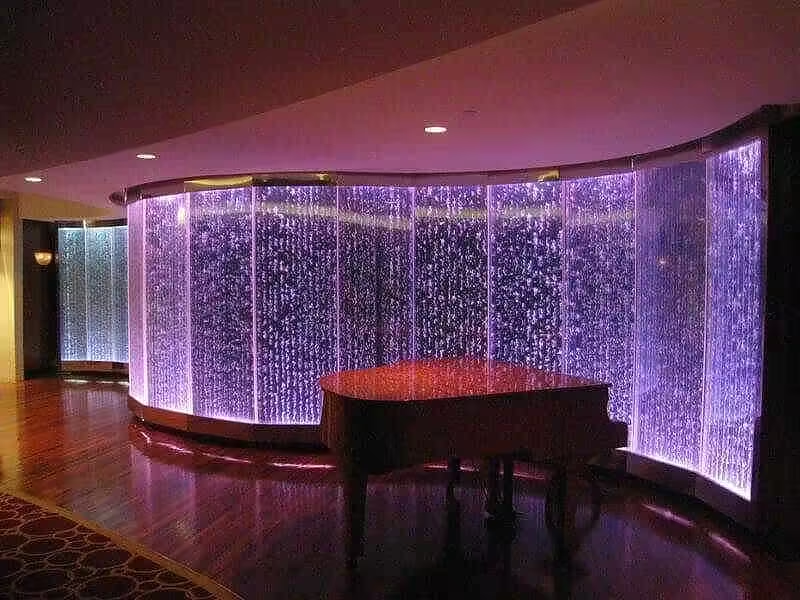














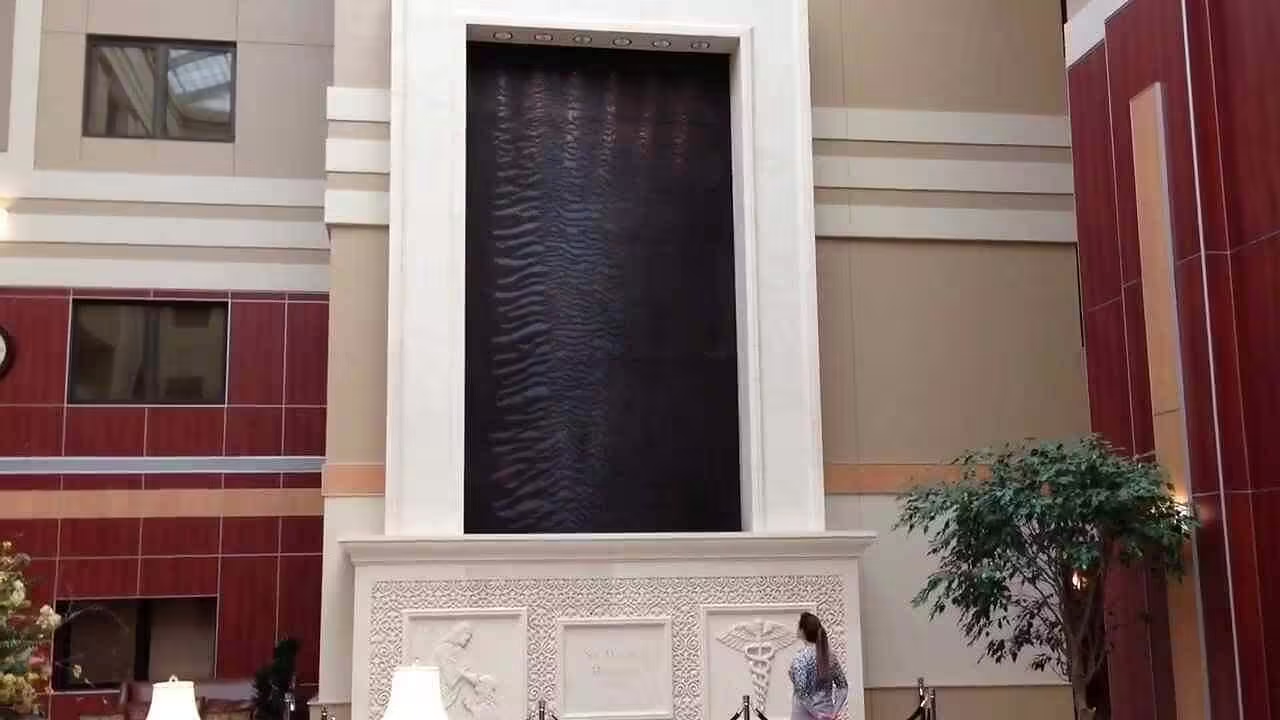










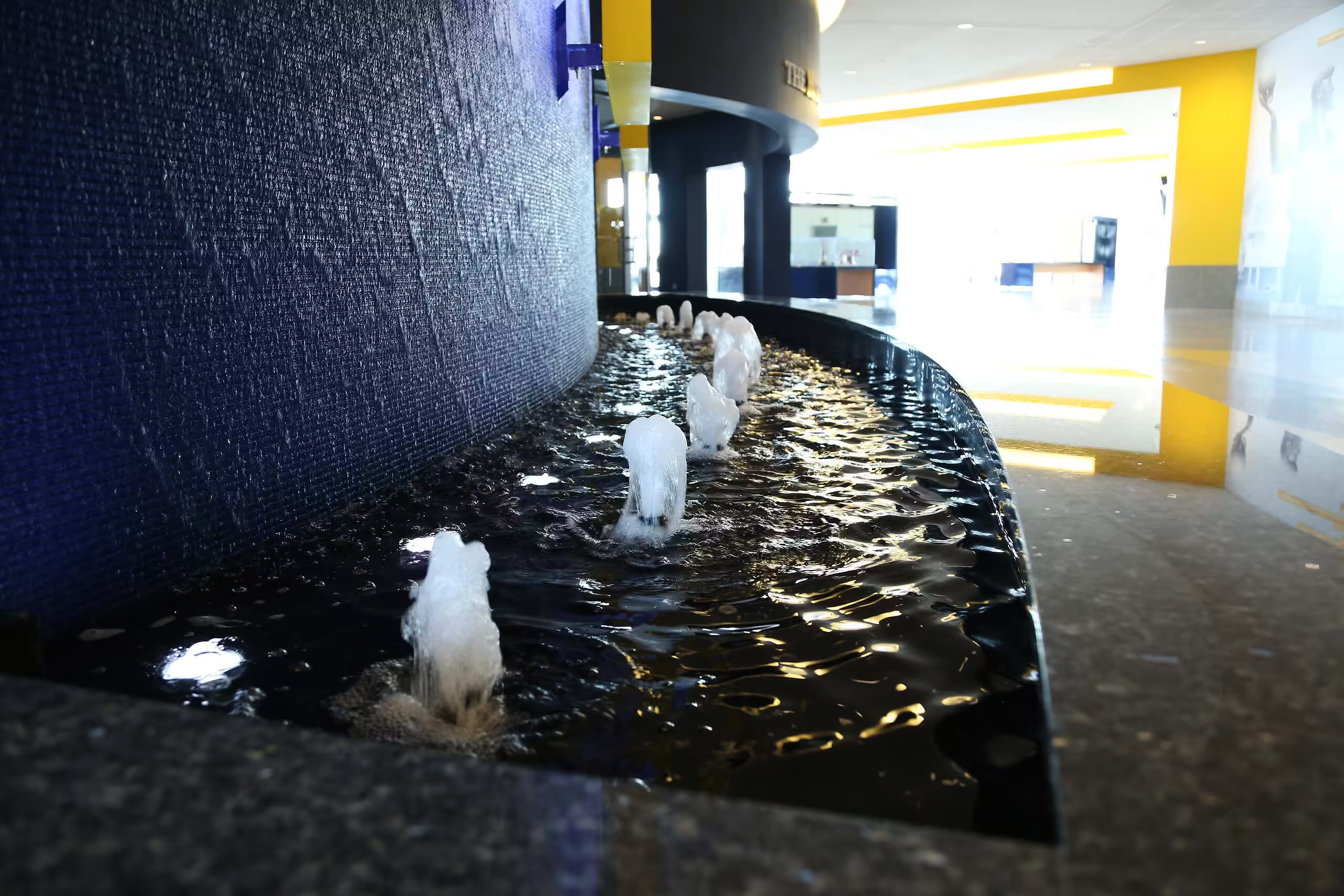



















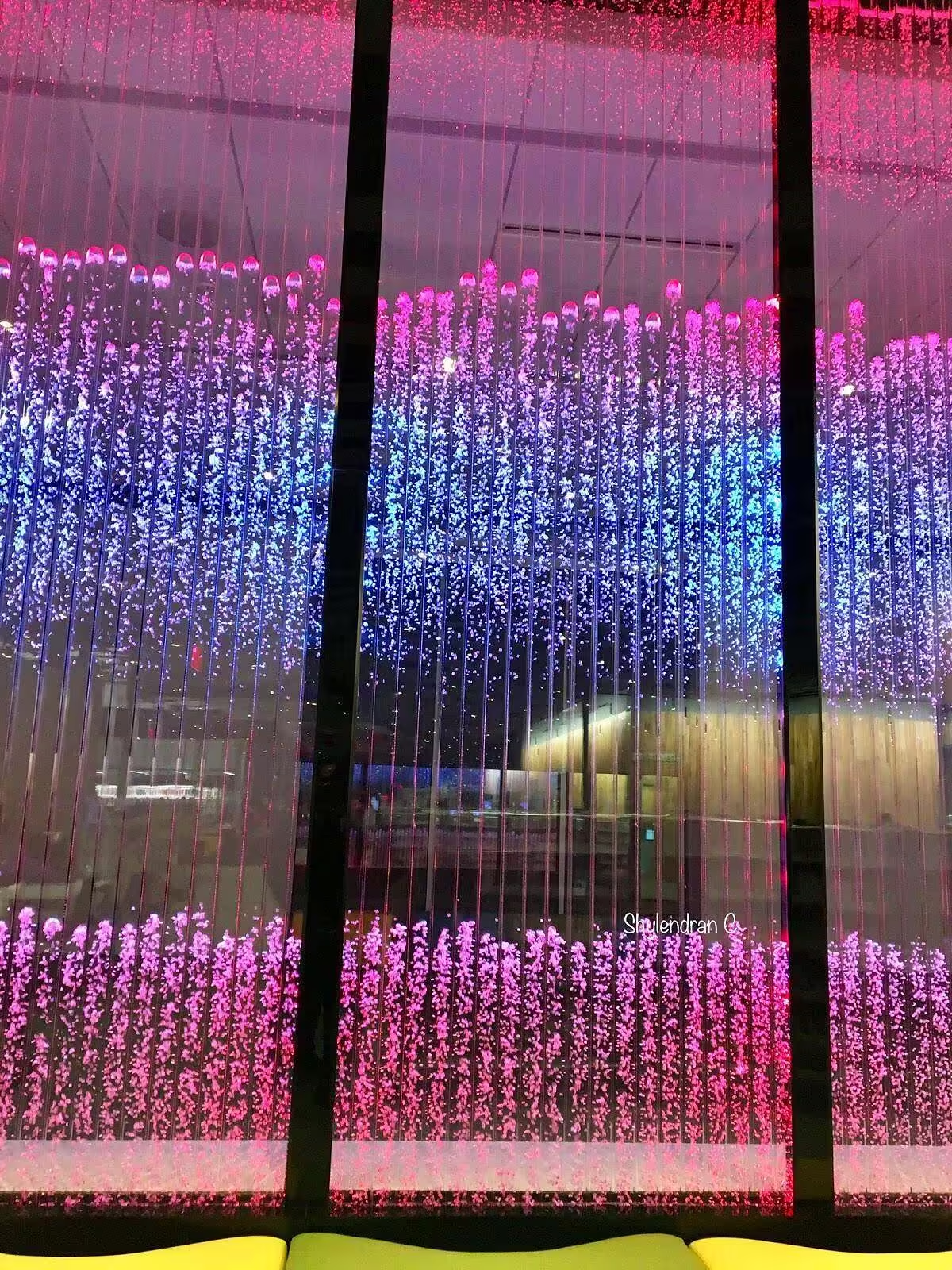









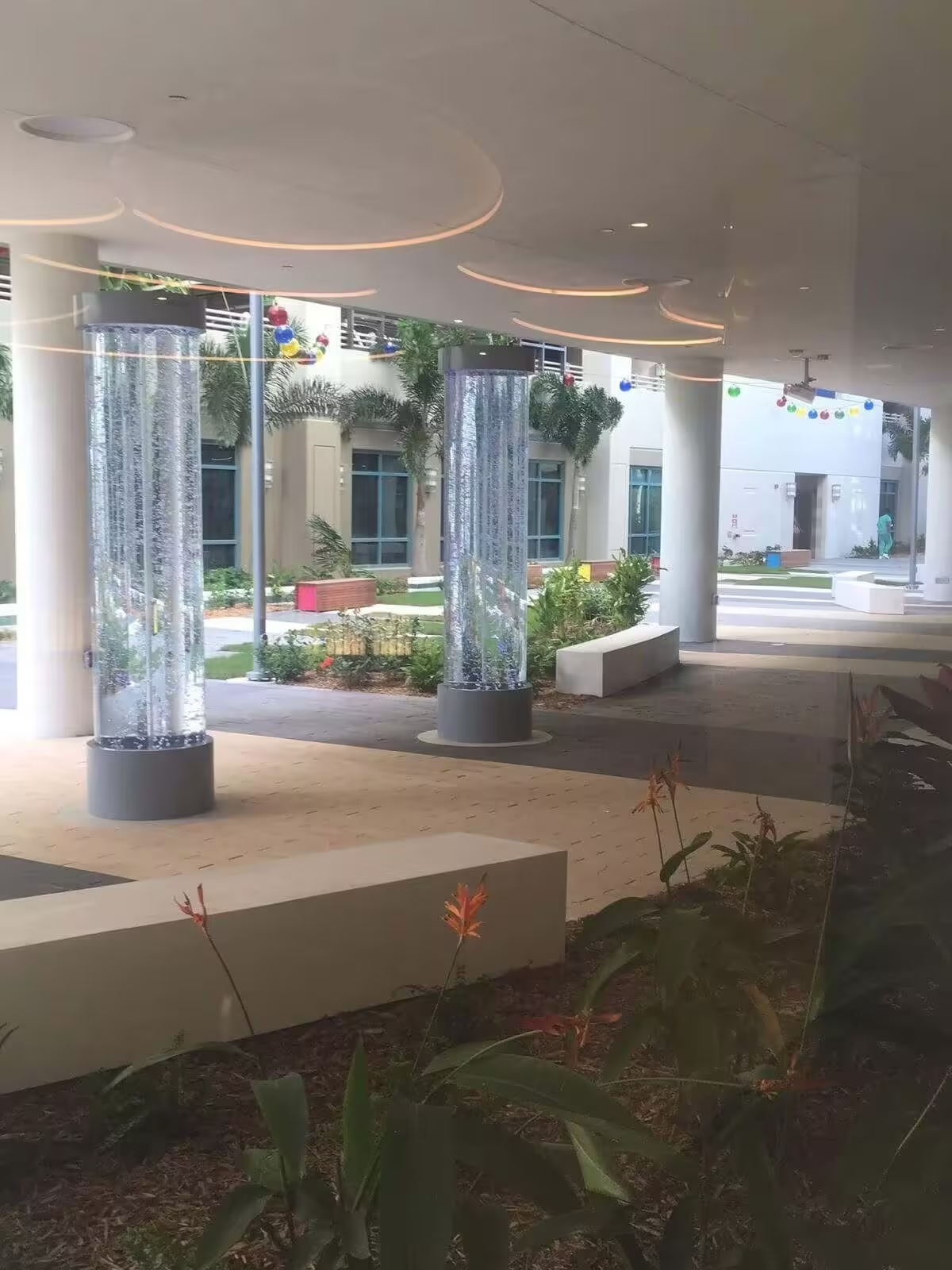





























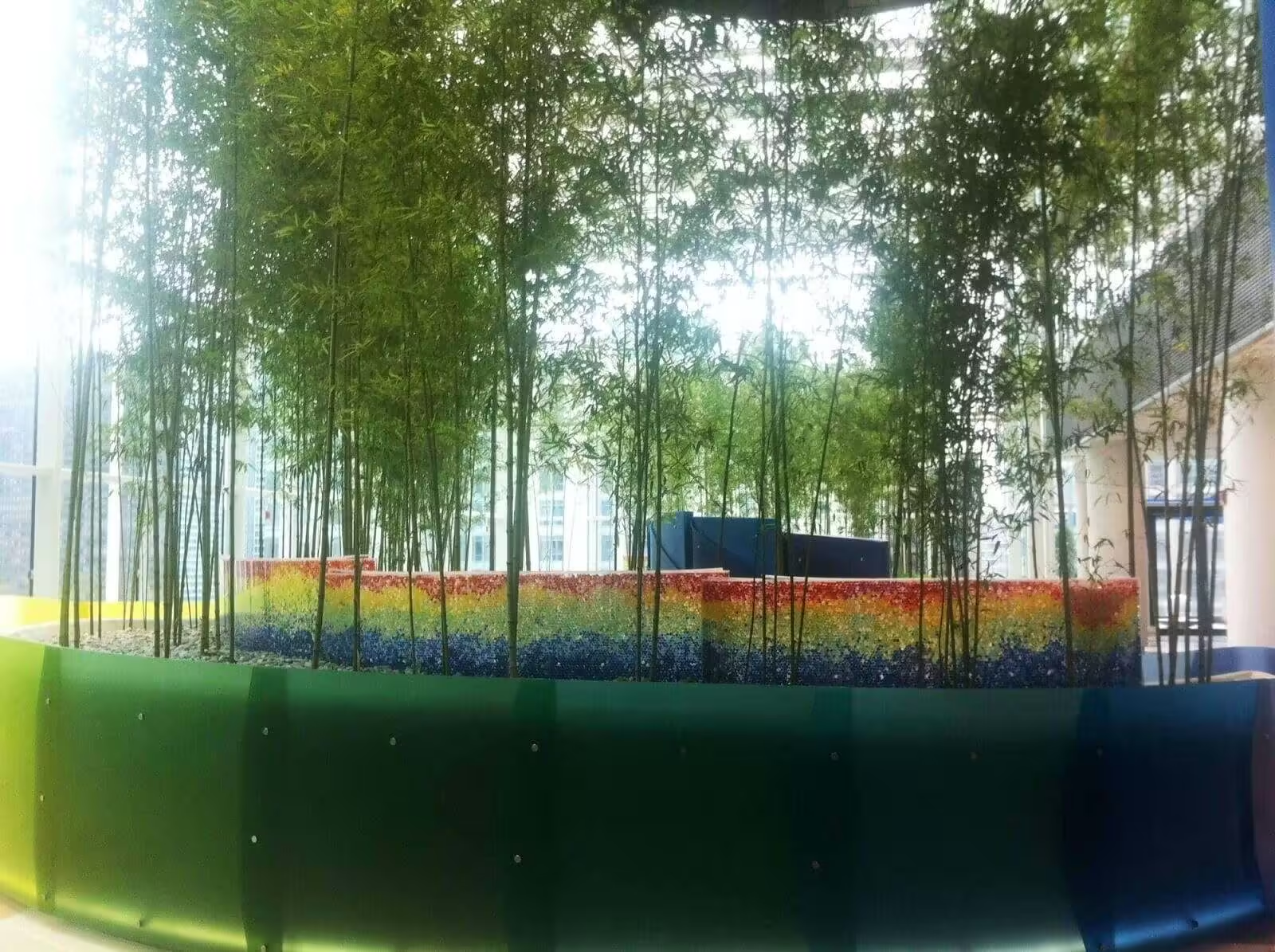
















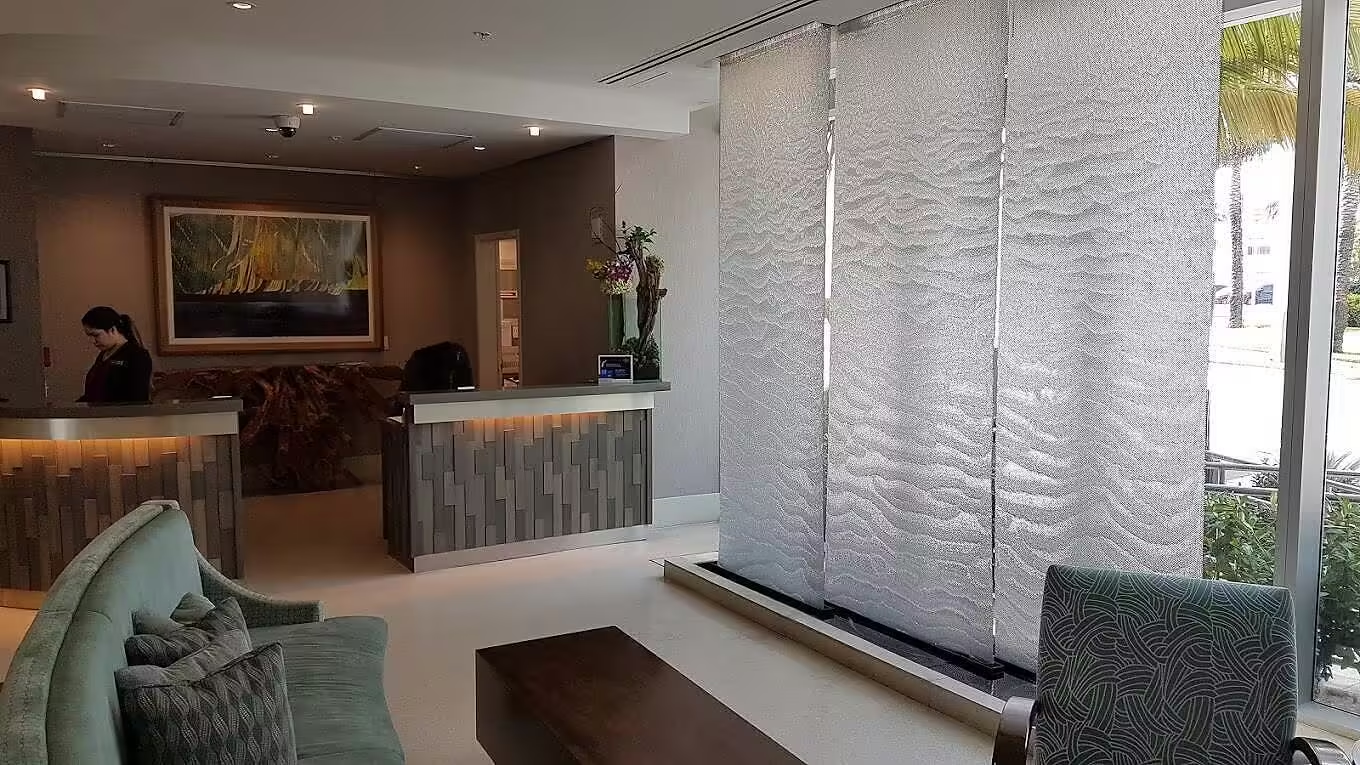
























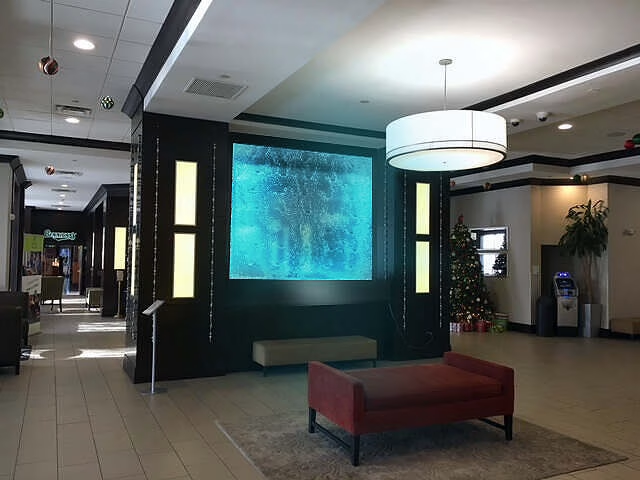















































![Rod Style Bubble Wall Swirley for Bounce Empire in Denver, Colorado[84] Rod Style Bubble Wall Swirley for Bounce Empire in Denver, Colorado[84]](https://cfw51.rabbitloader.xyz/eyJjIjp0cnVlLCJoIjoid3d3Lm1pZHdlc3QtdHJvcGljYWwuY29tIiwidiI6MjExNTM2ODkwNCwiciI6MX0/wp-content/uploads/Rod-Style-Bubble-Wall-Swirley-for-Bounce-Empire-in-Denver-Colorado84.jpg.webp)
![Rod Style Bubble Wall Swirley for Bounce Empire in Denver, Colorado 2[2] Rod Style Bubble Wall Swirley for Bounce Empire in Denver, Colorado 2[2]](https://cfw51.rabbitloader.xyz/eyJjIjp0cnVlLCJoIjoid3d3Lm1pZHdlc3QtdHJvcGljYWwuY29tIiwidiI6MjExNTM2ODkwNCwiciI6MX0/wp-content/uploads/Rod-Style-Bubble-Wall-Swirley-for-Bounce-Empire-in-Denver-Colorado-22-jpg.avif)




